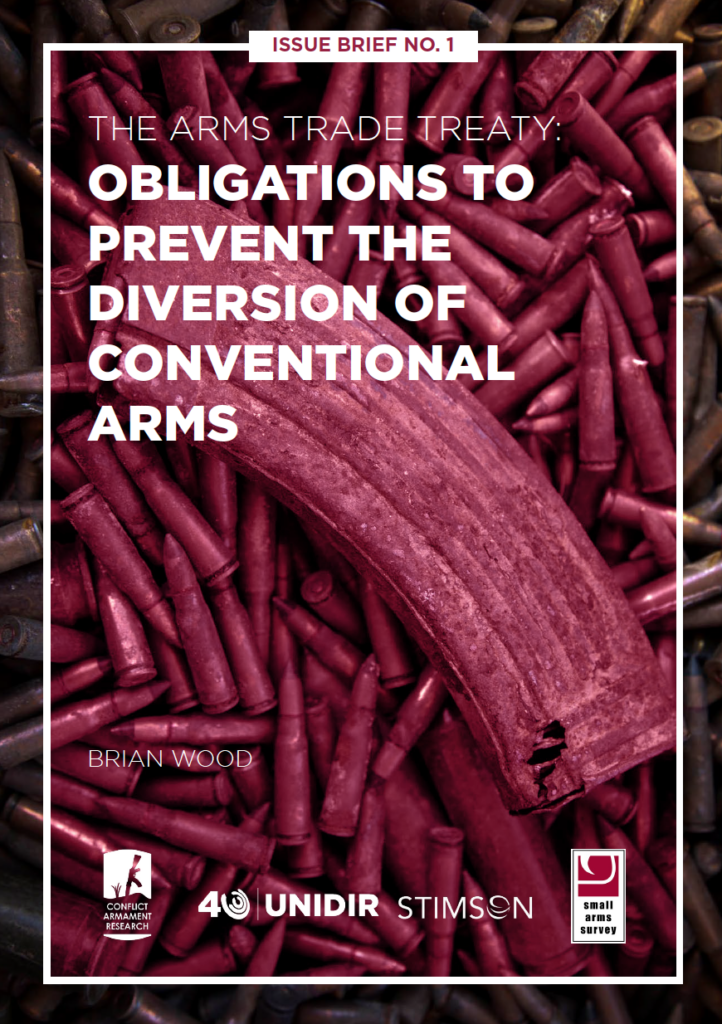States Parties to the ATT have accepted particular obligations to prevent, detect and eradicate the diversion of conventional arms transfers. However, the absence of a definition of ‘diversion’ makes the interpretation and implementation of ATT measures to address diversion difficult. This paper analyzes the inter-locking provisions of the ATT and other relevant instruments, providing key elements to guide the formulation of a general description of the diversion of arms transfers for the purposes of implementing the ATT. This paper is the first in a series of issue briefs released as part of a joint research project by UNIDIR, Conflict Armament Research, Small Arms Survey and Stimson Center. The objective of the research is to enhance knowledge and facilitate dialogue among States to strengthen shared understanding on the impact of the ATT in addressing risks of diversion, and to identify avenues to further promote effective policies and practices under the Treaty.
Citation: Brian Wood (2020) "The Arms Trade Treaty: Obligations to Prevent the Diversion of Conventional Arms", Conflict Armament Research, UNIDIR, Stimson Center and Small Arms Survey. https://doi.org/10.37559/CAAP/20/ASC/03
TRANSLATIONS
To read this report in French, click here.
To read this report in Arabic, click here.
Sponsor Organizations: Donors: Germany, France
Partners: Conflict Armament Research, Small Arms Survey, Stimson Center
